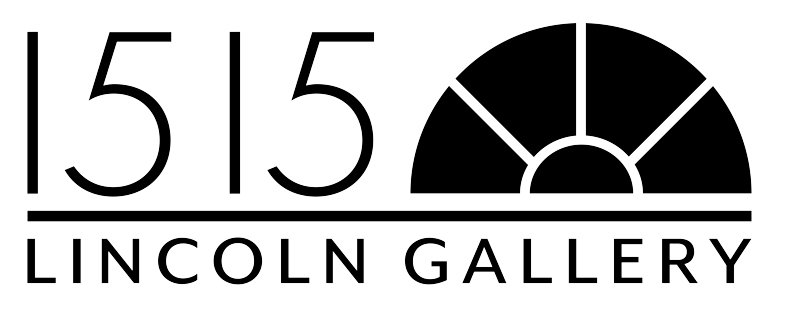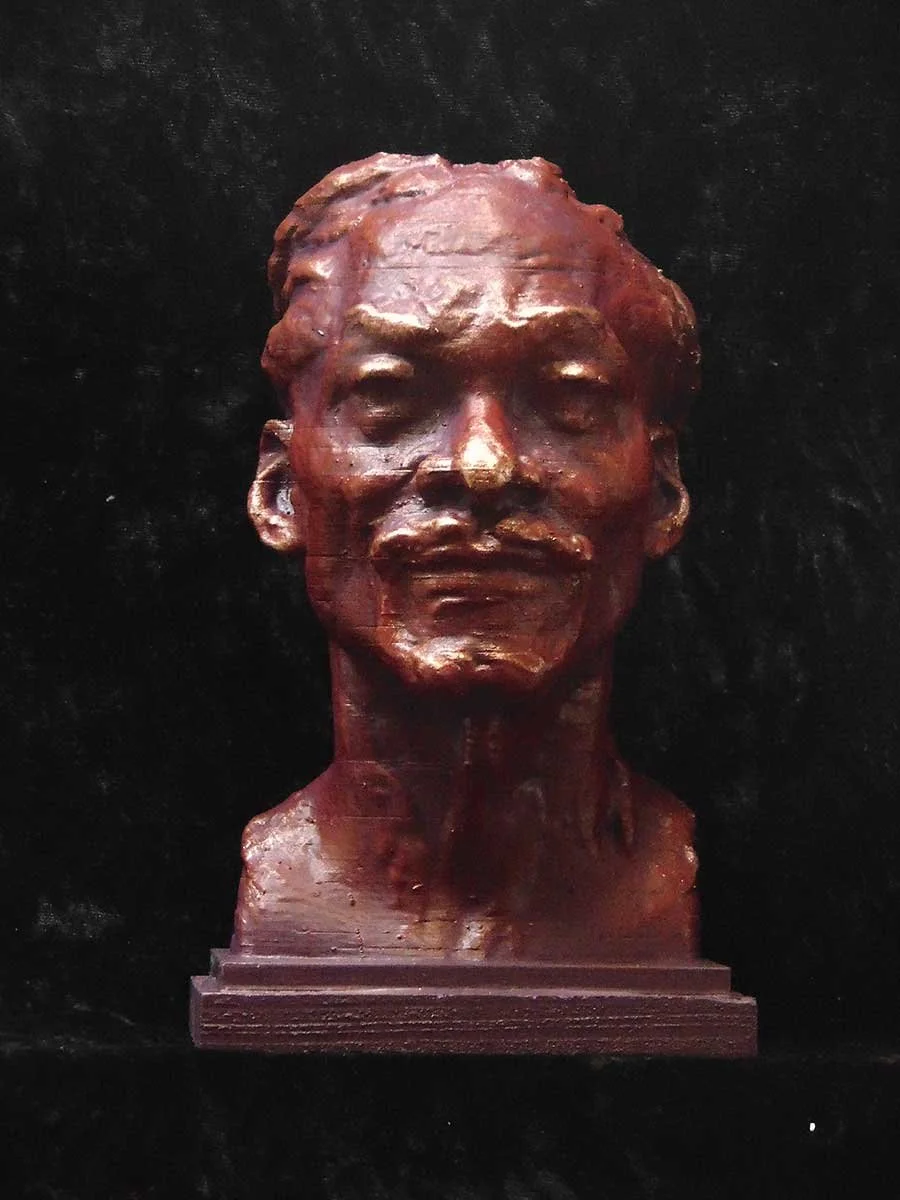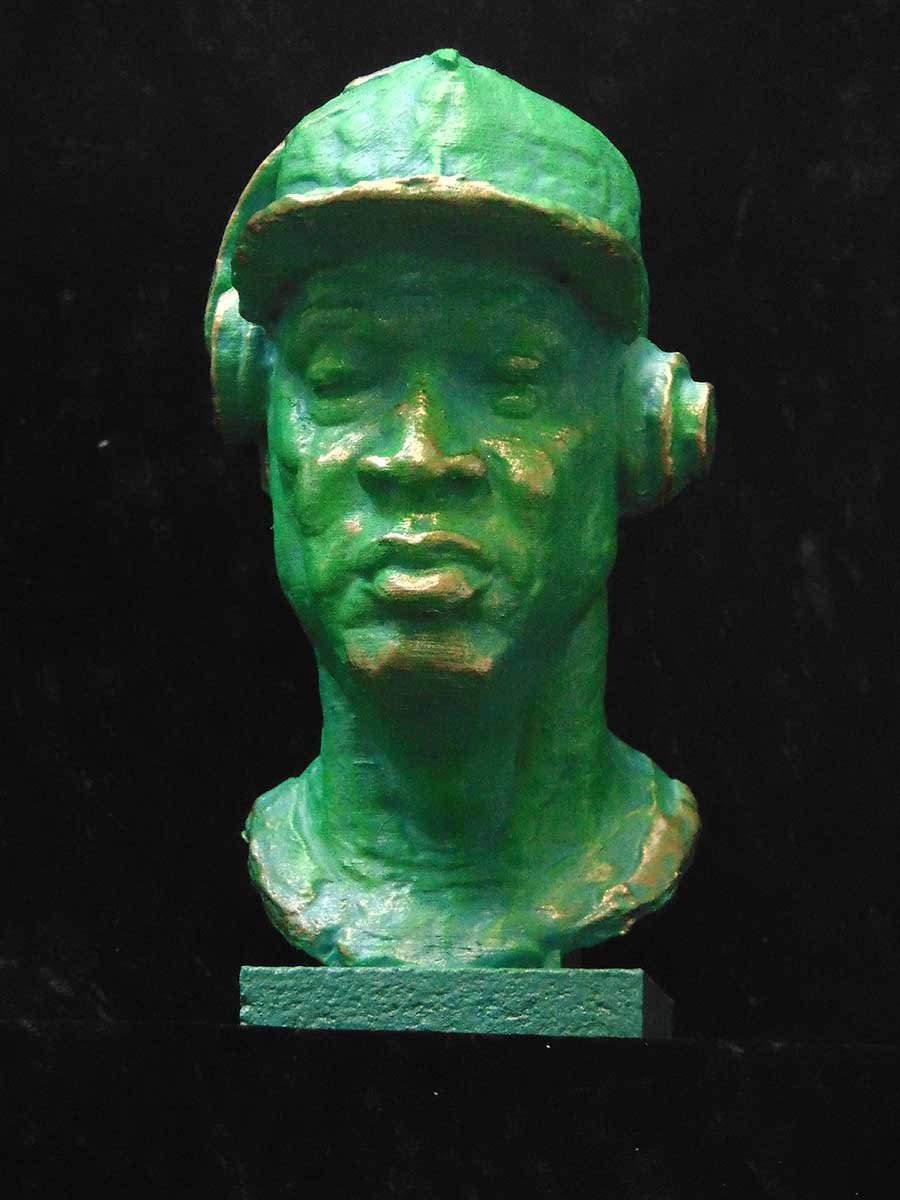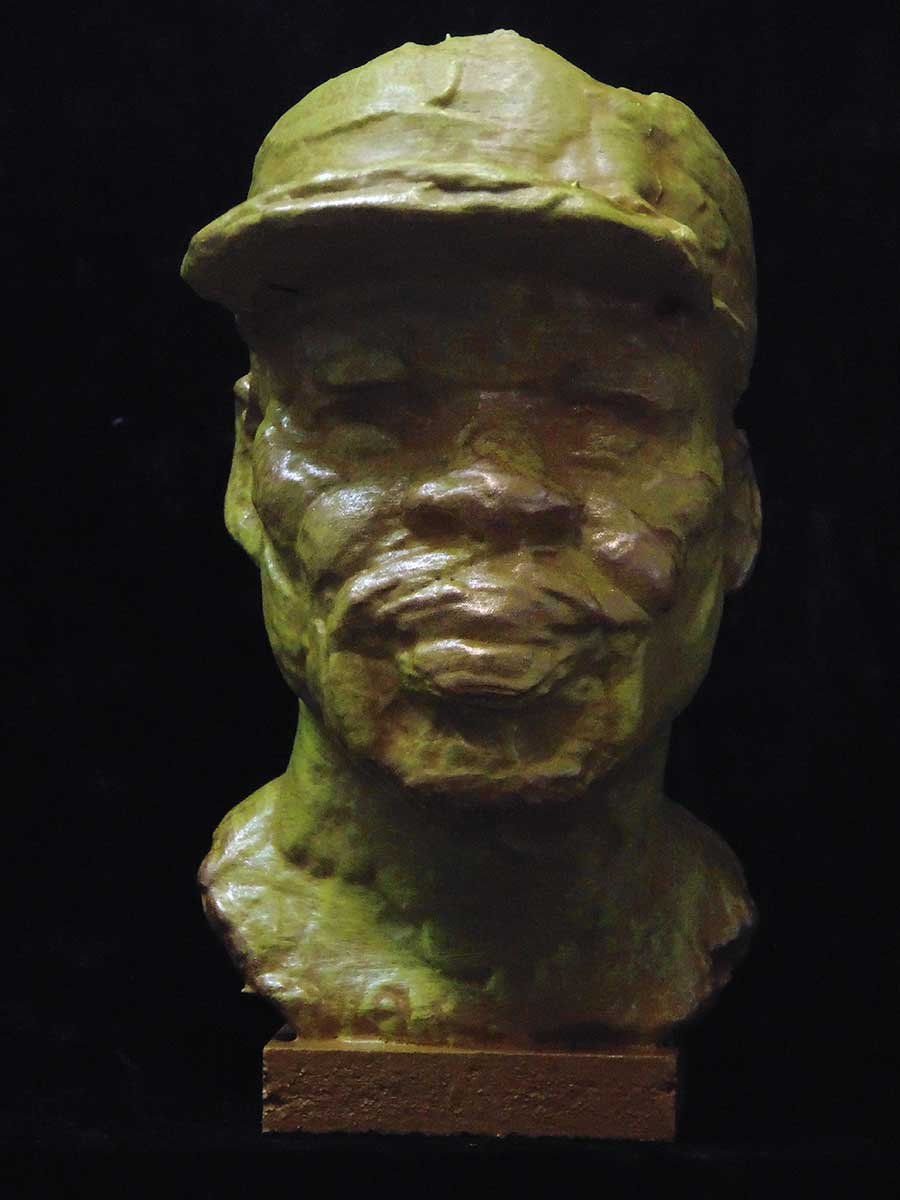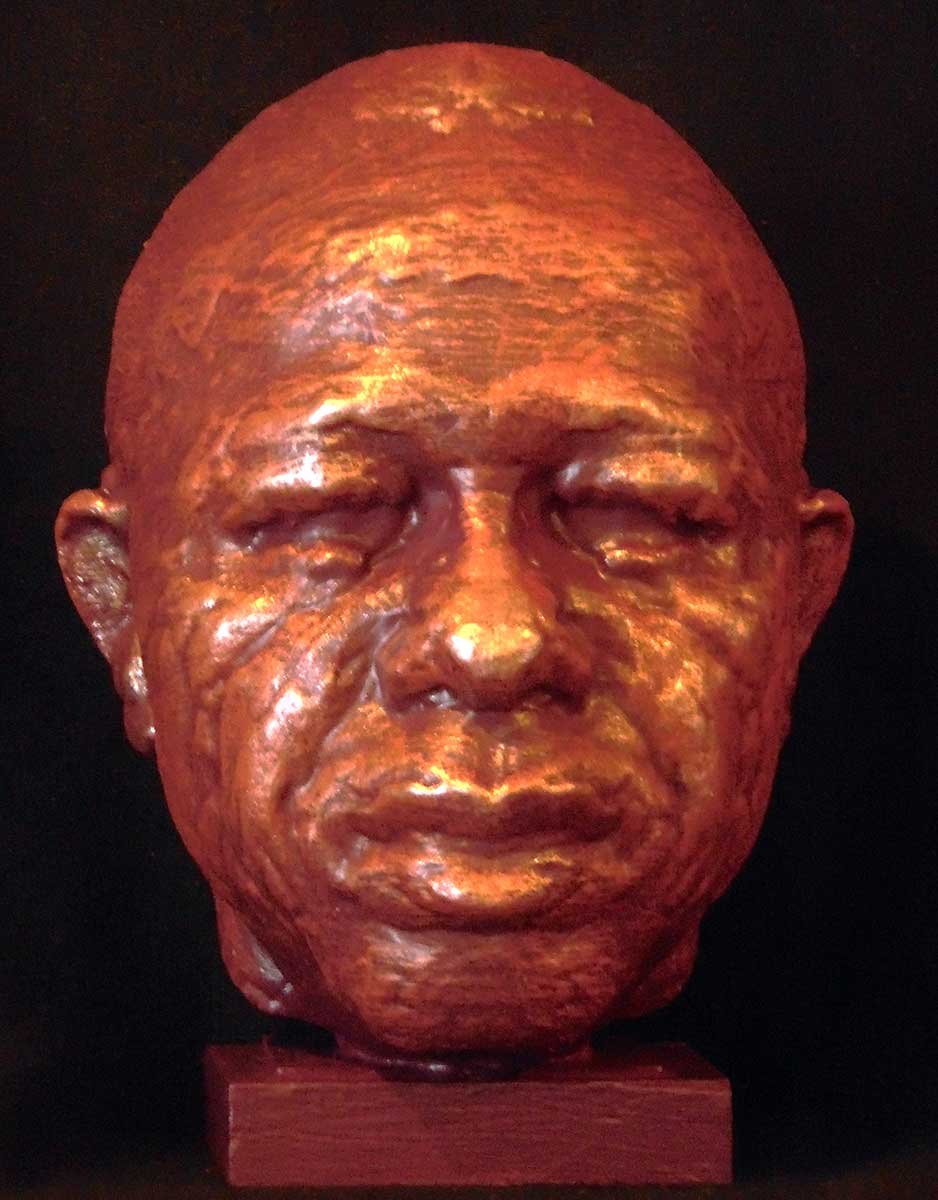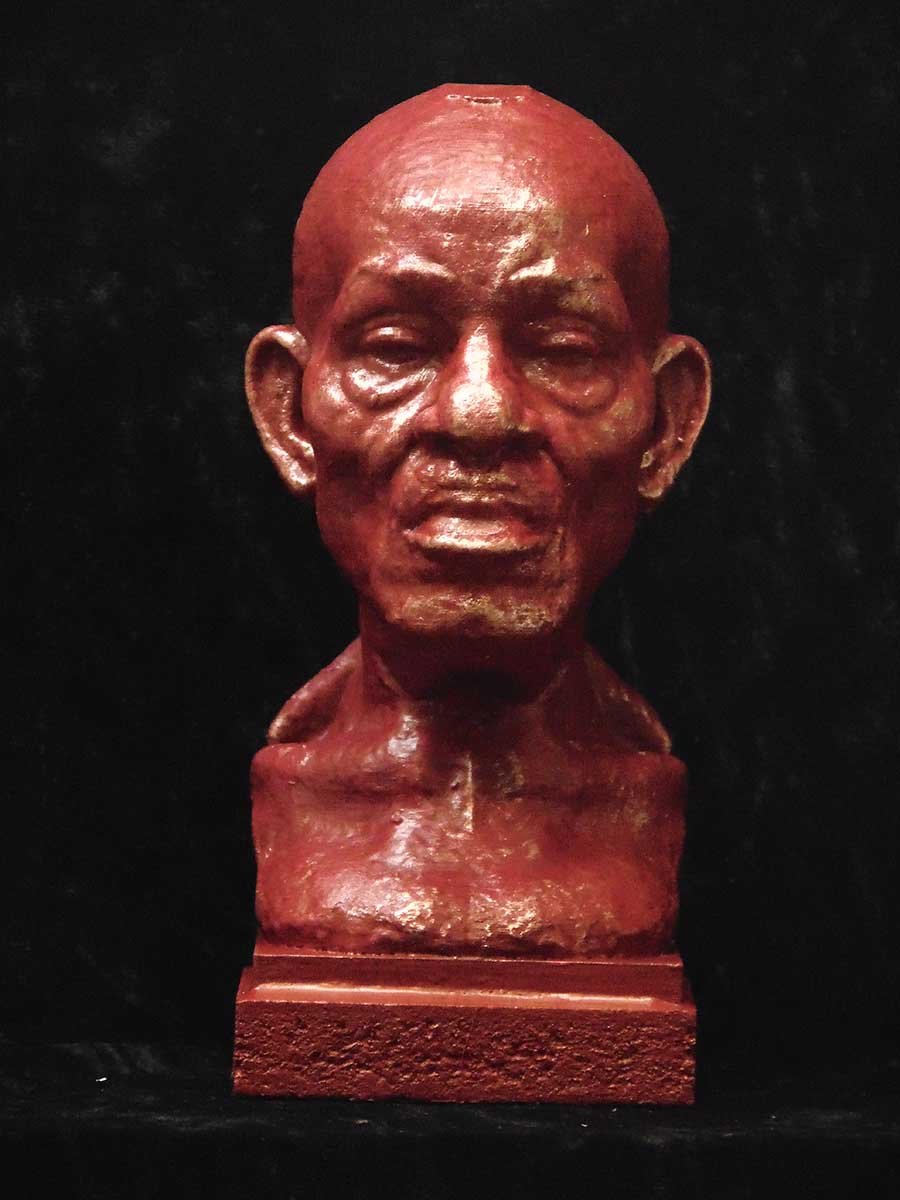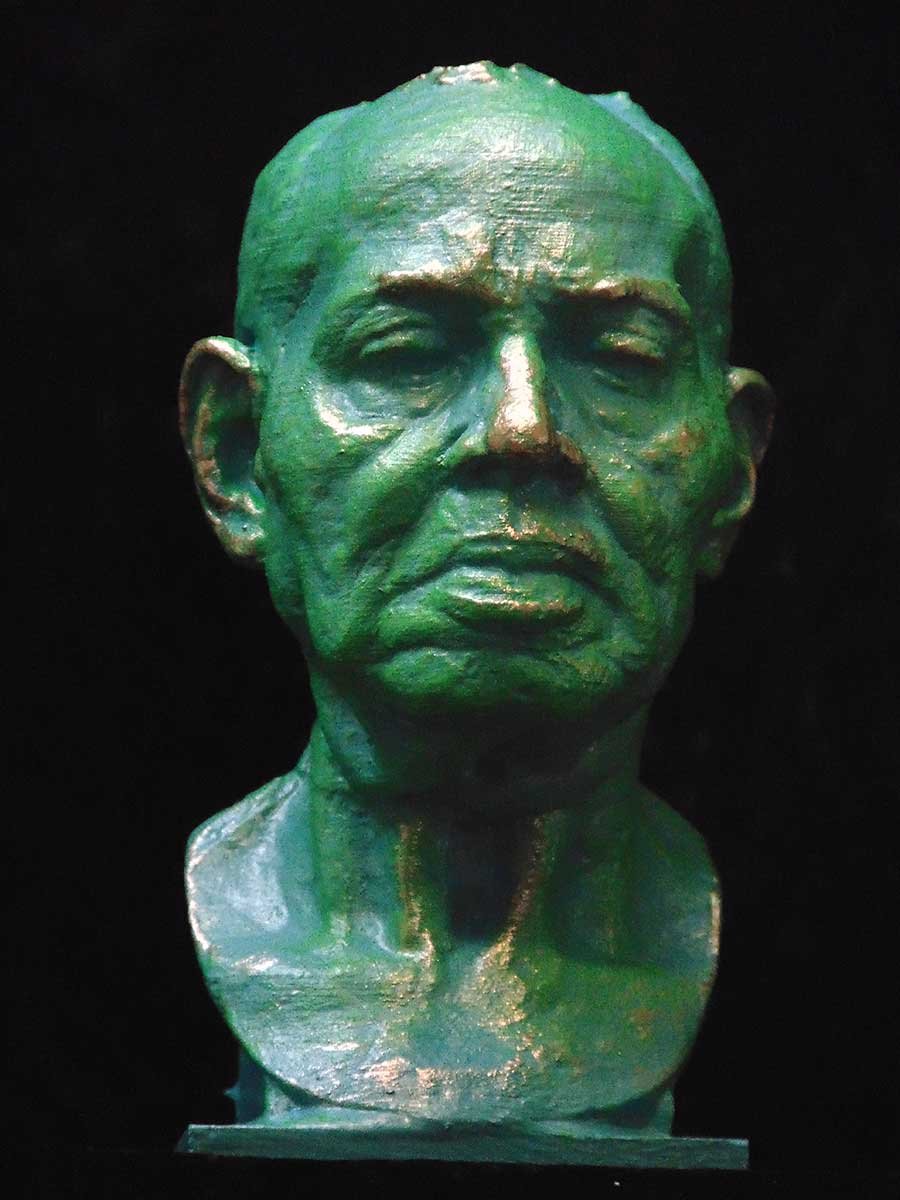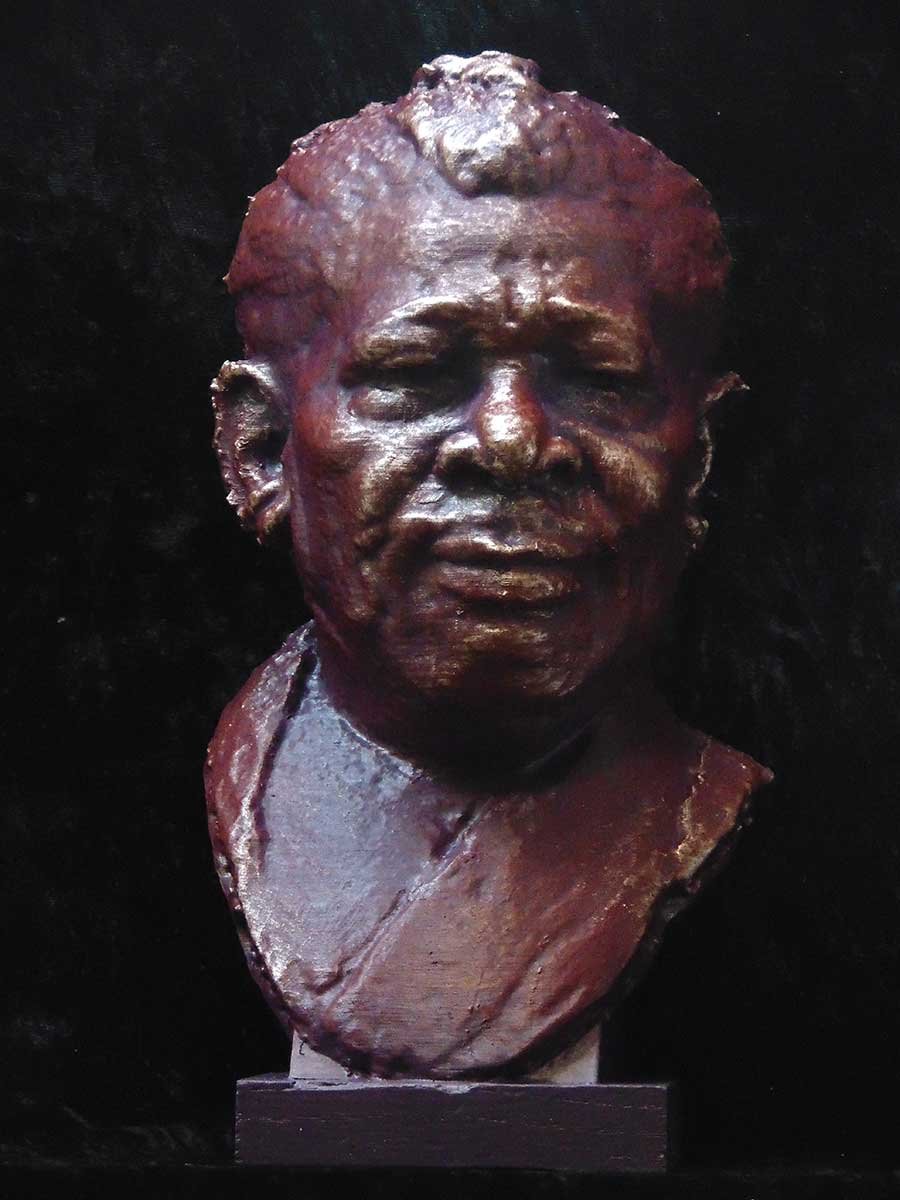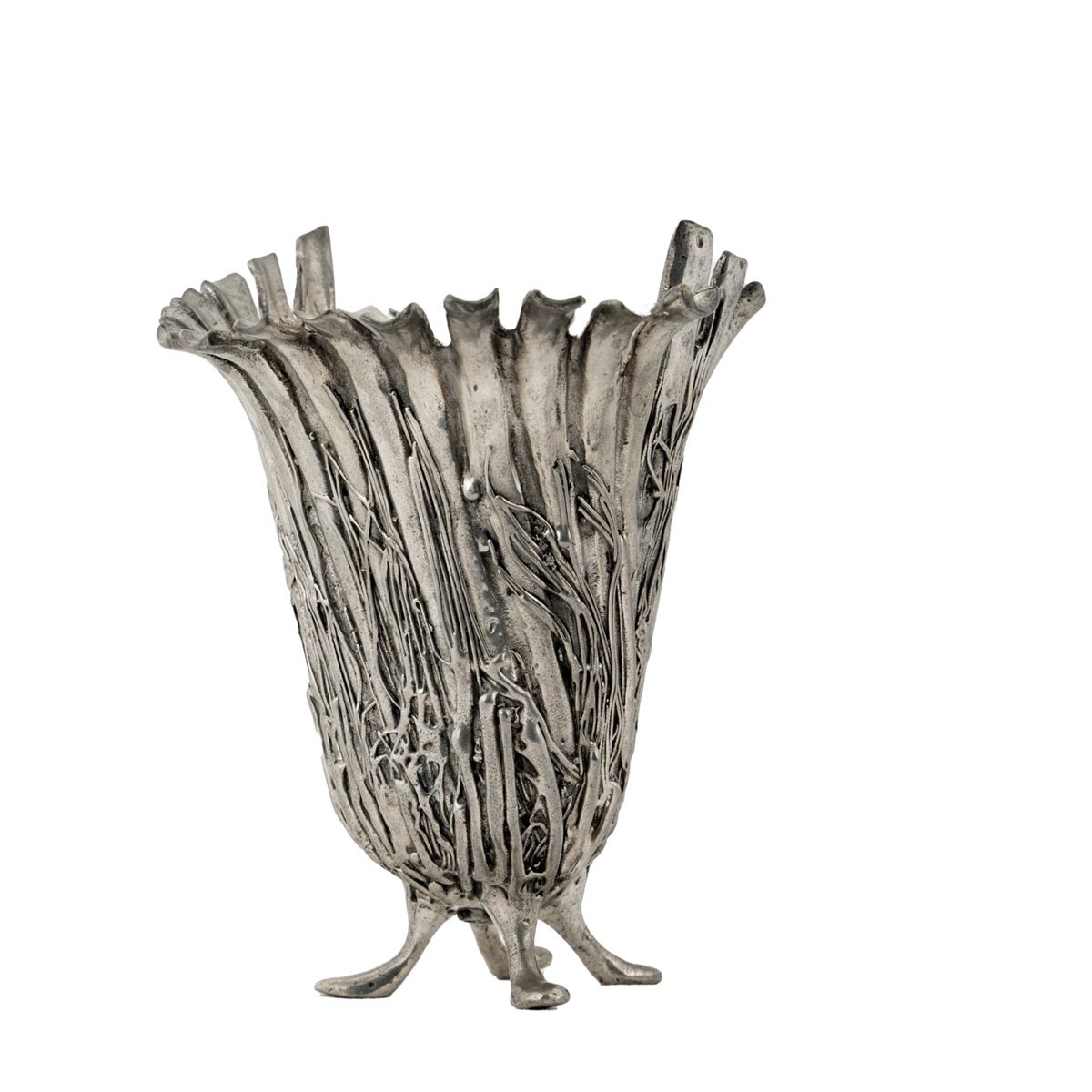Daniel A. Edwards
“Life-session portraiture remains the most pure form of sculptural expression for me, but I am really enjoying other methods for exploring portraiture.”
BIOGRAPHY
Daniel A Edwards is an Assistant Professor of Sculpture at CSU Stanislaus. His works address celebrity and popular culture in ways that often stir controversy. The release of his art is generally accompanied by a press release. Edwards includes the idea of promotion and associative fame in the marketing of his art. Past public sculpture commissions by Edwards include Landmark for Peace: The Martin Luther King Jr. and Robert F. Kennedy Memorial in Indianapolis. Edwards got his start as a mask maker in 1980 working for Death Studios in La Porte, Indiana, where he received his first sculpture training from Jeff Keim. He sculpted the comic character Zippy the Pinhead for Death Studios in 1983 under the guidance of its creator Bill Griffith. From 1981 to 1984, other works by Edwards for Death Studios were published in Starlog, Fangoria, Cinemagic, Heavy Metal, and Questar. In 1985, at the invitation of fashion illustrator Antonio Lopez, Edwards made his first visit to New York City. Edwards frequently hung out at Antonio’s studio from 1985 to 1986, where he was occasionally encouraged to draw alongside Antonio, from the models hired to model for Antonio’s 1001 Arabian Nights. In 1986, Edwards was briefly introduced to Andy Warhol by Antonio at New York’s Palladium, where Lopez and Warhol were judging a beauty contest. It was there that Antonio suggested that Edwards enroll at Warhol’s new school, The New York Academy of Art. On a scholarship paid for by Andy Warhol’s estate, Edwards attended the New York Academy of Art from 1988 to 1990. Often vilified for his use of celebrity, called “Shock Artist” by the New York Post and “prankish and frolicsome” by the New York Times, while winning such dubious honors as Sports Illustrated’s “This Week’s Sign of The Apocalypse,” The Art Newspaper’s Bartlebooth award, as well as Sporting News calling for “the artist’s head under a Guillotine,” Edwards’s artwork has also been seen as prophetic and consistent in its ability to humanize social issues that the media and public have trouble addressing.
ARTIST INSIGHTS
How are your background and life experiences connected to your art?
Coming soon
Who are some of your biggest artistic influences?
Auguste Rodin, Medardo Rosso, Marino Marini, Augustus Saint Gaudens, Jo Davidson, Jack Kirby, Gil Kane, Antonio Lopez, Luca Cambiaso, and Glenn Danzig are some of my artistic influences.
How have you developed your artist career?
While I was creating public sculpture commissions, I felt that it was my calling to act as an artist who truly represents political correctness. As an avid visitor to the National Portrait Gallery at the Smithsonian I noticed the collection wanting of racial diversity. With the National Portrait Gallery’s requirement of working from life in mind for potential acquisition of the work, I sculpted over the course of ten years approximately 50 portraits of living pioneers from baseball, the Olympics and the Blues.
What does your artistic work intend to communicate to its audience?
The creation of public sculpture is a collaborative experience. Most public sculpture projects have required the facilitation of meetings and consultations with appropriate experts for committee oversight and project construction. These collaborations typically include local historians, structural architects, landscape architects, structural engineers, foundry and fabrication specialists, and installation engineers. A budget and timeline generally guide the amount of teamwork a project requires. Larger projects with larger budgets often require more oversight in engineering, and fabrication.
Does your work comment on any current social or political issues?
My works address celebrity and popular culture in ways that often stir controversy. I have a BLM and Civil Rights series of portrait busts, George Floyd, Breonna Taylor, MLK Jr. and others.
Do you have a particular story that stands out from your career as an artist?
In 1985, at the invitation of fashion illustrator Antonio Lopez, Edwards made his first visit to New York City. Edwards frequently hung out at Antonio’s studio from 1985 to 1986, where he was occasionally encouraged to draw alongside Antonio, from the models hired to model for Antonio’s 1001 Arabian Nights. In 1986, Edwards was briefly introduced to Andy Warhol by Antonio at New York’s Palladium, where Lopez and Warhol were judging a beauty contest. It was there that Antonio suggested that Edwards enroll at Warhol’s new school, The New York Academy of Art. On a scholarship paid for by Andy Warhol’s estate, Edwards attended the New York Academy of Art from 1988 to 1990.
What is one thing you would like your audience to know about you?
My artwork has been seen as prophetic and consistent in its ability to humanize social issues that the media and public have trouble addressing.
Which current art world trends are you following?
BLM and Civil Rights, Hip Hop Artists
Why have you chosen to sell your work in the 1515 Lincoln Gallery?
I chose 1515 Lincoln Gallery because of Susan McCalmont's approach to working with artists and the community.
WATCH
ARTIST STATEMENT
Life-session portraiture remains the most pure form of sculptural expression for me, but I am really enjoying other methods for exploring portraiture,” says Edwards, a child of the civil rights era, who came of age as an artist in the time of political correctness. “While I was creating public sculpture commissions, I felt that it was my calling to act as an artist who truly represents political correctness,” says Edwards. As an avid visitor to the National Portrait Gallery at the Smithsonian, Edwards noticed the collection wanting of racial diversity. With the National Portrait Gallery’s requirement of working from life in mind for potential acquisition of the work, Edwards sculpted over the course of ten years approximately 50 portraits of living pioneers from baseball, the Olympics and the Blues.
BB King and Daniel | Photo by Patrick Barr
Life Study of 50 Cent by Daniel A Edwards
“My artwork has been seen as prophetic and consistent in its ability to humanize social issues that the media and public have trouble addressing.”
DaNiel A Edwards’ AVAILABLE ART
“Life-session portraiture remains the most pure form of sculptural expression for me, but I am really enjoying other methods for exploring portraiture.”
